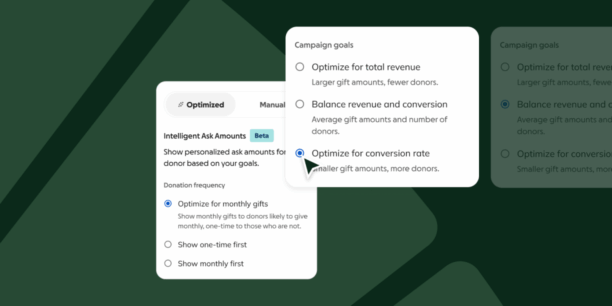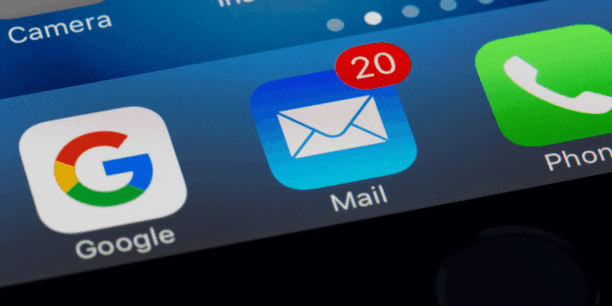7 Tips to Find the Right Nonprofit Influencers for Your Organization

Nonprofit organizations need to market themselves as much as any other business in the world.
Nonprofit influencers can help you do this. These individuals help increase awareness of your mission, garner support for new initiatives, and improve your online reach. Their participation can inspire new audiences to engage with your organization, as well as reignite the passion and interest of existing supporters.
Let’s take a look at some key tips that will help you find the right nonprofit influencers for your organization.
But first, what is an influencer?
Simply put, an influencer is someone who has amassed a large following online and uses their voice, personal brand, and values to influence their audience in some way. They can encourage their followers to buy a certain product or service, or they can use their personal brand and trustworthiness to cultivate certain values or rally people around an important cause.
Here are the steps to take to attract the right nonprofit influencers for your organization.
1. Have a clear set of goals in mind
Influencer marketing, much like any other marketing strategy, begins with clear and actionable goal-setting. Define your strategy, set a budget, and identify your key performance indicators (KPIs) to get started.
Clearly defined goals are a critical piece in accurately measuring whether or not your results were worth the investment. Start setting some short, mid, and long-term goals to guide and measure the results of your influencer marketing strategy.
Tailor each goal to the platform you’re using. Ask yourself which networks are the most relevant for your audience since each offers a unique value.
For example, Instagram influencer marketing can help reach younger donors and expose your organization to a potential advertising reach of over 800 million users. On the other hand, LinkedIn might help you engage corporate sponsors to boost your corporate fundraising opportunities.
Assign concrete goals to each relevant network of donors to maximize your engagement potential. Keep in mind that influencer marketing doesn’t just raise awareness; it can strengthen trust with both new and existing supporters.
People tend to trust the experiences and reviews of others—especially those whom they admire—so invest in word-of-mouth campaigns executed by influencers.
New data from Classy’s Why America Gives report shows that word of mouth is the top way donors identify new causes to give to.
However, for these influencers to tell the story of your brand the way it’s meant to be told, they need to share your values. Shared values are the key to a thriving brand-supporter and brand-influencer relationship. Plus, there’s a high chance that many of these individuals’ followers will align with these same values.
If you partner with an influencer who does not reflect the vision your nonprofit stands for, you risk sending out the wrong message to your online community. This could not only deter new donors but also jeopardize your brand’s reputation.
3. Start with thorough research
Once you’ve set your goals and have defined your key values, it’s time to start researching the trends in your cause sector. This will help you gain a deeper understanding of your target demographic (the kind of supporters you need), as well as the current state of nonprofit influencer marketing.
Start by looking at the relevant hashtags in your industry to find influencers who are already supporting nonprofits. See who is advocating for other organizations within your sector and consider reaching out to them or the organization itself to hear more about their influencer marketing experience. You can also pay for influencer databases and tools to conduct your research, some of which we’ll mention at the end of this post.
Market research will also allow you to uncover the costs associated with influencer marketing in your specific sector, which can help you budget more accurately. You might even discover some timely content trends while you’re at it.
Consider every platform and its best practices. For example, Facebook video ads are a great way to promote a new campaign, especially if they feature a trustworthy influencer. On the other hand, you might want to let Instagram influencers do most of the work and allow them to attract new supporters more organically through regular posting.
Hashtags are a great tool for raising awareness and improving the visibility of your nonprofit, but they’re also great for identifying influencers who might align with your goals.
People use hashtags to gain exposure, boost discoverability, and increase engagement. Influencers use them regularly to do the same, ensuring that their content is seen by the largest possible audience.
Here are some relevant hashtags being used today:
#nonprofit #charity #donate #community #volunteer #nonprofitorganization #giveback #love #education #support #fundraising #covid #socialgood #dogood #ngo #change #givingback #philanthropy #help #fundraiser #makeadifference #children #instagood #donation #hope #donations #causes #volunteering #mentalhealth #bhfyp
Supplementary hashtags that are closely related to the nonprofit sector are also helpful in boosting discoverability:
#helpingothers #motivation #health #inspiration #youth #art #socialimpact #india #nonprofitlife #family #nonprofitsofinstagram #coronavirus #bethechange #bhfyp #activism #c #life #leadership #africa #awareness #humanrights #womenempowerment #music #repost #giving #volunteers #fitness #adoptdontshop #humanity #empowerment
Influencers use hashtags on every social platform, but there’s no denying that they’re most popular on Instagram. If you’re looking to find the right influencers for your brand, start your search there.
Hashtags will depend on your unique niche and the causes you support, but you should start with some general terms to discover a wider pool of influencers. Once you identify a handful of potential partners, aim to collaborate with at least one influencer on every relevant social platform. Keep in mind that striking a balance between niche and general influencers is key to optimizing your engagement potential.
5. Focus on micro-influencers instead of the big names
Some influencers have millions of followers on Instagram, but it’s important to note that a bigger following is not always better—especially when it comes to marketing a nonprofit. There are many reasons why you should focus on working with nonprofit micro-influencers instead, and one of the top considerations is your budget.
The more followers an influencer has, the more expensive it will be to work with them, and the results can be underwhelming. This is because their large following might not all necessarily align with your brand or your values.
Nonprofit micro-influencers, on the other hand, have a more concentrated audience that might be more likely to engage with your organization. These influencers will have between 10,000 and 100,000 followers on average, which means that more of their followers are likely to actively engage with the content they put out on a daily basis.
These are the same followers who might follow a link to your donation page, or decide to learn more about your organization’s impact.
In return, you can offer these influencers some swag, access to an upcoming event, or a shoutout from your account where more advocates of your cause can connect with them.
Remember, finding the top Instagram influencers in your niche is not just about the follower count, but the values they hold, the trust they garner from their audience, and the balance between follower count and the rate they charge. After all, working with an influencer should be a mutually-beneficial relationship.
6. Conduct email outreach to prominent influencers
Most of the time, you won’t be able to discuss the details of your collaboration in a direct message on social media, nor should you. Influencers on Instagram and other popular platforms will typically leave a business email address in their bio section, which will allow you to reach out through the right channel and open up a direct line of communication.
It’s important that you approach email outreach with a strong strategy. Personalize every email to the influencer’s unique brand. Do your research, find out what they’re passionate about, and start crafting customized emails that will grab their attention and inspire them to agree to an introductory call.
Consider this email example highlighted in our How to Engage Celebrities and Influencers in Fundraising webinar as one approach to take when initiating outreach:
You can propose a short-term collaboration consisting of just a few posts or discuss a long-term agreement. Whichever you choose, ensure that your goals and values are clear and expectations are set from the start. In doing so, you can begin forging a trustworthy relationship that will benefit both parties over the long term.
You might even keep a running list of the influencers you connect with to target for future recurring giving appeals or to reach out to when launching a new campaign.
7. Consider automating your vetting process
Nowadays, there is automation software for nearly every marketing process. You can automate everything from email sends to posting on social media. This not only makes for a more efficient workflow, but also allows your nonprofit to reallocate the time and money spent on those tasks towards your mission-critical work.
What you might not have known is that you can also automate influencer research and use a dedicated tool to find the right influencers in your niche. There are many tools out there that use AI and machine learning to pair you up with the best nonprofit influencers in your industry, but it’s important to find the right fit for your budget.
Here are some tools you can explore:
Upfluence. Upfluence is a dedicated influencer marketing platform built to help you find influencers and manage your entire relationship and strategy. With more than 3 million influencers in its database and a robust search feature, this can be a useful tool to find the right influencers for your nonprofit. Its built-in AI feature constantly adds new influencers to the database as well, so you can continue to surface new partnership opportunities.
Social Blade. Social Blade was one of the first free influencer databases in the world, and still remains as one of the most reliable. Access a database of millions of influencers scattered across Instagram, YouTube, Twitter, and other platforms, and you can even leverage the tool’s reporting feature to gain valuable industry insights and news.
Awario. Awario is a social listening tool that allows you to monitor the conversations in your field about your own brand or your competition, simplifying the process of finding nonprofit influencers that align with your mission.
Dibz. Dibz is a comprehensive prospecting and search engine optimization (SEO) tool with plenty of useful features, including prospecting and contacting influencers. You can use its powerful search functions to find the right influencers for your needs and within your niche, and then create an outreach campaign to get them on a call or quickly seal the deal via email.
Next Steps
Influencer marketing remains an effective way to organically spread the word about your organization’s impact and build trust with supporters from around the world.
That said, it’s important to work with the right nonprofit influencers in order to maximize your marketing dollars and achieve your long-term goals. Do your research and be intentional with your partnerships. When executed correctly, influencer marketing can take your nonprofit to new heights.

Get Your Social Media Content Planner



